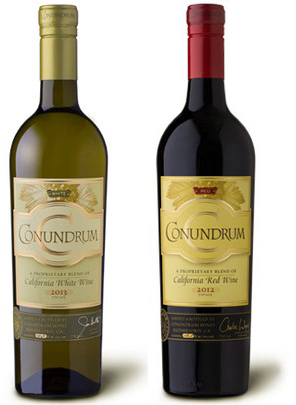Xiao-Li Meng gives some advice to a student in a conundrum.
After the final exam of my first Gen. Ed. course, Real-life Statistics: Your Chance for Happiness (or Misery), a student insisted on seeing me. Given the course title, I thought I would hear about his misery—likely about the final. Instead, he delighted me with two questions: “How should I invest my income for retirement?” and, “What wine should I choose for the graduation celebration dinner with my parents?” At least one student took my teaching (too) seriously!
The happy course had five modules: Finance, Romance, Medical, Legal, and Wine and Chocolate. The beauty of starting with the finance module is that mean becomes expected return, and variance is replaced by volatility. Introducing technical terms via real-life/substantive realizations is pedagogically effective, but it does raise the expectation that the lecturer must know something about the said substantive field. Having been a very poor (no pun intended) investor myself, I only had one answer to his first question: “You need to retain a professional.”
That could easily be my answer to his second question as well. But I doubted he would consider choosing wine for a dinner a serious enough business to call on a professional. Besides, what would a professional say in such cases? I face a similar quandary about how to respond to (frequent) questions such as, “I need to analyze this data set but I don’t know anything about statistics. Can you tell me how to do it?” This could be an innocent inquiry from a curious mind eager to enter the magic kingdom of statistics. But it could also represent an annoyingly arrogant belief that statistical analysis amounts to a few pedestrian rules easily explainable to, and implementable by, anyone.
In the same vein, a wine snob may find his second question annoying: “How could I possibly answer that? At least you need to tell me what kind of wine your parents like? What food will you be having? How much money do you want to spend?” These are all reasonable questions from a connoisseur’s perspective, but one must be mindful that what makes someone a novice is his/her inability to ask the right questions. Perhaps my student never realized the food–wine interaction, much like statistical novices typically do not appreciate the dependence of statistical methods on the problems targeted. Ignorance naturally expects homogeneity, because appreciating heterogeneity requires nuanced knowledge.
Trying to answer every such question with professional rigor is neither necessary nor practical: just think about the time needed to understand any actual data collection process. My student merely wanted to pick up a reasonable bottle, and many people who have asked me “how to do it” just wanted some quick-and-dirty ways to get their projects done. Refusing to answer may minimize our professional risk, but it also minimizes our opportunity to educate and to influence. Therefore, the challenge I periodically pose to myself is how to provide ballpark-right answers to a sincere novice question like that of my student—answers that are easy to remember and implement, not terribly sensitive to conditions the novices are blissfully oblivious to, and yet, statistically speaking, not completely useless or utterly misleading.
Having invested more in relaxation than in retirement, I felt comfortable offering an ABC rule to my student: “Get an Average-priced, Blended, California wine.” For novices, price is the easiest criterion for choosing wine. But finding a good bargain requires knowledge that novices do not possess; the same is true for buying expensive wines, especially given the nonlinear dependence between quality (and personal preferences) and price at the high end. Grape varietals mean far less to novices than to connoisseurs, and blended wines (often red) are safer because they tend to be fruity enough to please many occasional consumers, but not overwhelmingly so to offend serious connoisseurs. Finally, whereas many wine aficionados profess more loyalty to their winemakers than to their friends or loved ones, I find that California wine generally has relatively smaller variance in quality and rarely becomes “an acquired taste.”
In the eyes of professional winemakers, wine is no less a subtle subject than statistics—indeed much of high-end wine making is about creating unquantifiable subtleties and complexities. Therefore, any simplistic ABC rule must be very offensive to my enological friends (“Xiao-Li, how dare you ignore the entire Old World?”). To be fair to my statistical friends, I must then propose an equally if not more offensive ABC rule for statistical novices: “Averaging when you have more than one alike, Bootstrapping when you want more than one alike, and Correlating when you have more than one unalike.” Of course, this one requires a good bottle to go with it, especially if you are professionally enraged (“Xiao-Li, how dare you recommend averaging without any qualification?”).
So, do you prefer a white or a red Conundrum?

Comments on “XL-Files: The ABC of Wine and of Statistics?”